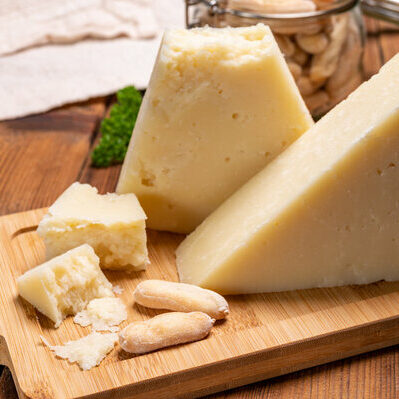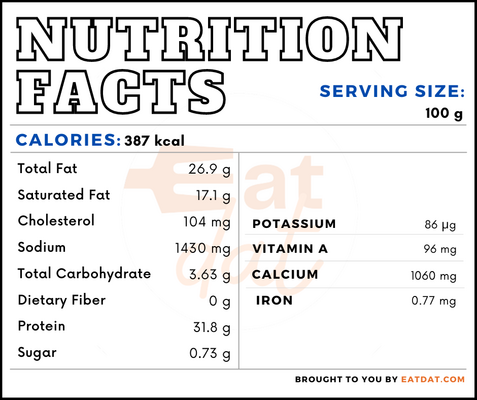
Romano Cheese
also known as Pecorino Romano
What is Romano Cheese?
Romano cheese is a North American product derived from the Italian cheese, Pecorino Romano. This cheese is very similar to the Italian product, but due to a protected designation of origin (PDO), it may not be designated as Pecorino Romano. Romano has a whitish color and a hard texture, suitable for grating.
- It has a salty and sharp flavor.
- Unlike Pecorino, which must be made with sheep’s milk, Romano may be produced using milk from cows, goats, or sheep.
Some of the most popular Pecorino Romano cheese brands include:
- Milano’s
- Locatelli
- Frank and Sal
- Maese Miguel
- Alma Gourmet
- PastaCheese
- Deroma
- Krinos
- Zerto
- Sini Fuvli
Origin of romano cheese
Pecorino Romano is of Italian origin and was originally created in 1st century BC in Ancient Rome. It was created as a hardy and durable food to feed the soldiers, and was named after the empire. They often combined it with fava beans. This traditional version was made with sheep’s milk, and is known as Pecorino Romano. It can today only be produced in Sardinia, Italy, due to a Protected Denomination of Origin. However, outside of Italy, it is prepared with cow’s milk and is known as Romano cheese.
Nutrition
Nutritional profile for Romano cheese (100 gms):

Romano cheese is rich in calcium, phosphorous, sodium, and vitamin A. Also, it contains magnesium, potassium, selenium, folate, choline, retinol, carotene, vitamin D, and fatty acids in decent quantities. Furthermore, regular consumption of cheese may help in combating inflammation, preventing osteoporosis and arthritis, decreasing the risk of fractures, and managing obesity.
Commercial production
Romano cheese produced in the US is usually made from cow’s milk, aka Vacchino Romano. To prepare this cheese, the ingredients required are milk, culture, salt, lipase, rennet, and calcium chloride. First, the milk is processed and curdled with the rennet. Then, the curds are pressed and the whey is drained off. Next, the curd is separated and then heated until they dry out. Finally, the curds are salted and left to age for at least 6 months, though they can be kept for up to 24 months for better flavor.
Romano cheese recipes
This cheese has a hard and brittle texture and can be easily grated on pasta. This makes it a great topping for a variety of dishes. Here are a few recipes to try:
- Cacio e Pepe
- Lemon Romano Chicken
- Pasta alla Gricia
- Pepper Cheese Puffs
- Grilled Halibut
- Stuffed Artichokes
- Potato Gratin
- Sfincione Siciliano
- Stuffed Veal Rolls
- Amatriciana
- Spinach Spaetzle
- Corn Frittata
- Inside Out German Cottage Pie
FDA regulations
The FDA defines Romano cheese as food prepared from cow’s milk or sheep’s milk or goat’s milk, and having a granular texture and a hard and brittle rind. It must have at least 38 percent milkfat and not more than 34 percent moisture, and must grate easily.
References
Rozenberg, Serge et al. “Effects of Dairy Products Consumption on Health: Benefits and Beliefs–A Commentary from the Belgian Bone Club and the European Society for Clinical and Economic Aspects of Osteoporosis, Osteoarthritis and Musculoskeletal Diseases.” Calcified tissue international vol. 98,1 (2016): 1-17. doi:10.1007/s00223-015-0062-x
https://www.ncbi.nlm.nih.gov/pmc/articles/PMC4703621/
Dekker, Louise H et al. “Cheese and Healthy Diet: Associations With Incident Cardio-Metabolic Diseases and All-Cause Mortality in the General Population.” Frontiers in nutrition vol. 6 185. 17 Dec. 2019, doi:10.3389/fnut.2019.00185
https://www.ncbi.nlm.nih.gov/pmc/articles/PMC6927928/
Romano: the cheese that packs a punch, Proudly Wisconsin Cheese, https://www.wisconsincheese.com/about-cheese/romano
